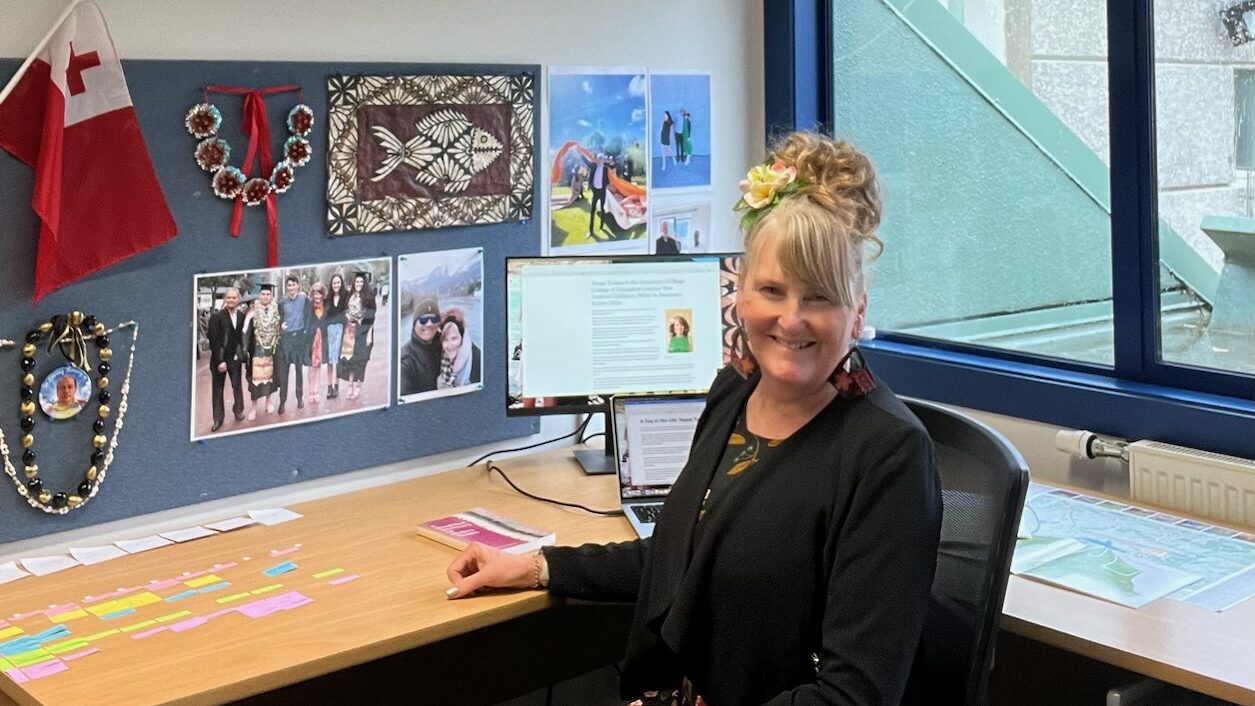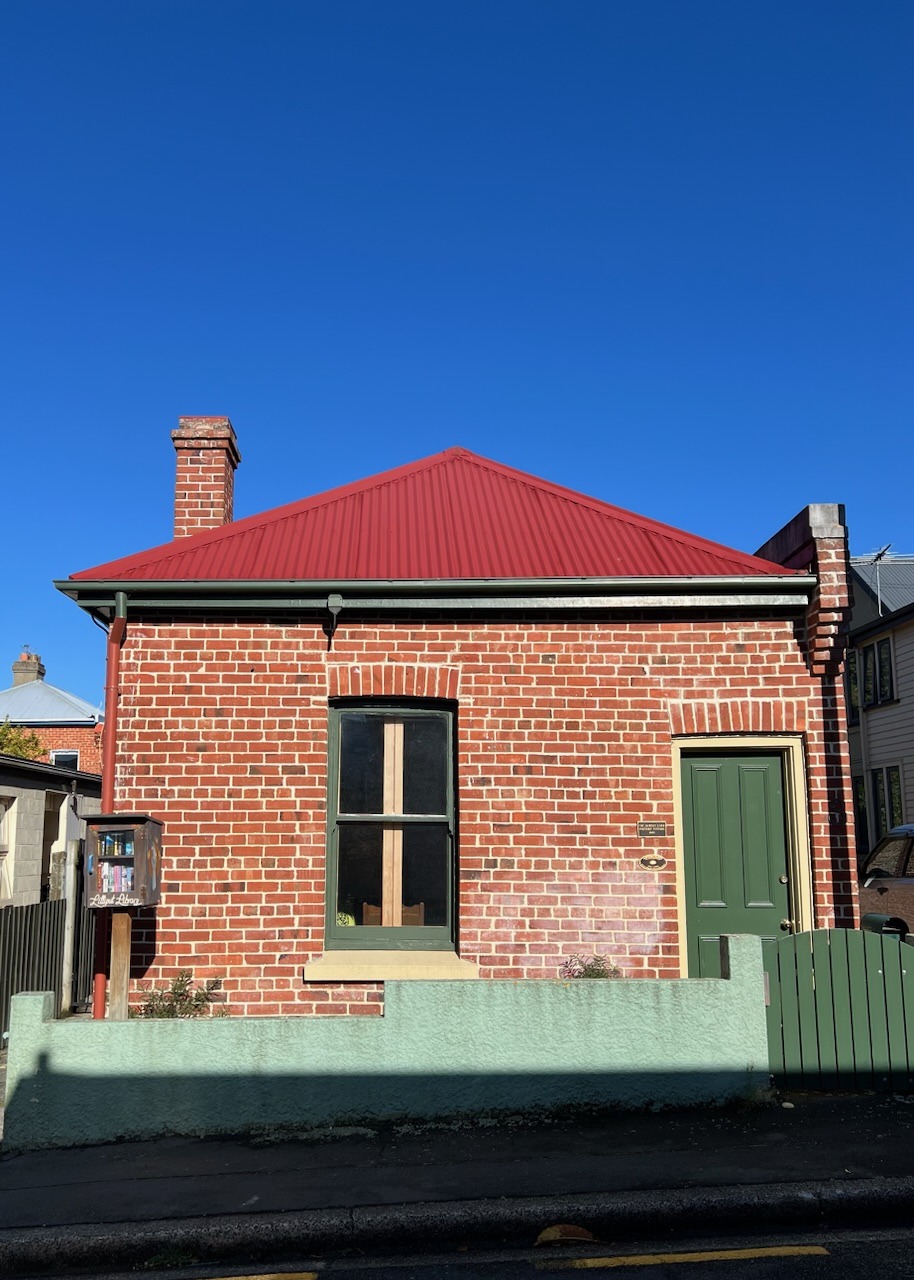Feana Tuʻakoi has authored many fiction and non-fiction works for children and is the current University of Otago College of Education Creative New Zealand Children’s Writer in Residence. Here she tells us about why she writes what she writes, and her experience of doing it in Ōtepoti.

I’ve always been really clear about my kaupapa. After all, it’s the reason I started writing in the first place: I wanted our kids to see people like themselves in books.
When our fānau were preschoolers, we couldn’t find any children’s books written by or about Tongan people. As someone who grew up on hand-me-down mysteries, mostly written in England or the US, my childhood assumption was that books had very little to do with real life—but at least the characters looked like me. This wasn’t the case for our fānau. Kids like them were never in books.
So, in 1997, I started writing stories reflective of our reality. I included characters, events, ideas and words that made sense to our fāmili, and things that happened to us in our everyday lives, whether or not they were specifically Tongan.
I targeted the educational market, as a way to reach large numbers of children. I hoped that kids who read my work might see their own stories as important. They might even feel they belonged in books and go on to become our writers of the future. (Such lofty aspirations!)
We need to see into each other’s lives, so we don’t begin to ‘other’ each other.
Our fānau are now adults, but my kaupapa remains unchanged. I find that if I know my why, it’s easy to figure out what and how. I still write for the educational market, but I also write poetry, essays, articles and short fiction for adults, as well as fiction and non-fiction for the children’s trade market. Much of my work includes characters and experiences from fāmili like ours. We need to see into each other’s lives, so we don’t begin to ‘other’ each other.
During my time in Ōtepoti, Dunedin, as the 2024 Otago University College of Education Creative New Zealand Children’s Writer in Residence Fellow, I’m writing my first middle grade mystery, centred on cousins who don’t get on. One is from a Pālangi family, a bit like that of my childhood, and the other’s from a Tongan-Pālangi fāmili, similar to my own family now. They’ll have to work together to get the mystery solved.
Since arriving in February, I’ve gradually settled into a new routine. At home, I work around the hustle and bustle of fāmili life. Down here, bewilderingly, it’s all about me.

I wake up when I wake up and, if it’s a weekday, wander into uni. I’m not required to turn up every day, but one of the joys of the residency is being part of campus life, with its rich conversations and exchange of ideas. Plus, it’s always fun to weave through the morning’s student clamour.
My office is warm, comfortable and filled with light. It’s decorated with ngatu (tapa cloth), kahoa (neck garlands) and photos of my fāmili. I deposit my lunch in the staffroom fridge, make a green tea and get on with my mahi.
I write with my door open, unless it’s especially noisy, as I love being part of a child-focused community. (It helps that I’m at the end of a long corridor!) I don’t start with emails or miscellaneous busy-ness, lest my writing time evaporate. I just open my manuscript file and continue from where I left off.
I work on a MacBook Air because I like its responsive keyboard. I have part of my hip bone in my left ring finger (long story!), so it doesn’t type as confidently as my other fingers. My keyboard registers even the slightest touch, so I don’t have to keep fixing typos.
My writing process is always the same. After the initial idea (I particularly like a good ‘what if’ question), I try not to think too much. I just start writing. The first draft of my middle grade novel, Lopini the Legend, began with the words: ‘Something about someone who…’
It’s almost like a brain-dump, where I splatter my subconscious across the page. When I run out of oomph, or can’t see where to go next, I make an outline of what I’ve written so far. That way, I can see the shape of the thing and where it’s likely to go. If the structure looks a bit wobbly, I shore it up. Then I brain-dump my way to the end of the book, stopping to outline as needed. Once I know how the story ends, I go back and write the beginning. For me, the magic is in the writing.
I love to edit my work, to deepen plot and character, to play around with words and phrases, to read them out loud and feel them on my tongue.
Then, I’m up to my favourite part—editing. I love to edit my work, to deepen plot and character, to play around with words and phrases, to read them out loud and feel them on my tongue. When I can’t make it any stronger, I put it away for a while, so I can read with ‘new’ eyes. Then I re-edit. (Told you I love it!). I never send anything to publishers, until I’m happy to see my name on it.
On Mondays, I work until 10am and then head downstairs for the weekly College of Ed morning tea. I always stop in the middle of something, to make it easy to get back into the same brain-space. Sometimes, I pop out for coffee with other Fellows, uni staff, local writers, or librarians. On Thursdays, I lunch with the Early Childhood crew.
My days are interspersed with video and audio calls from fāmili, working around their own job demands in other cities. Technology helps us stay close, even at a distance.
I work until my brain decamps. Then I head to the staffroom for lunch. Sometimes, the room is packed. Sometimes, I have only my AirPods and audiobook for company.
After lunch, if my brain’s still AWOL, I catch up with admin, answer emails and work on PowerPoints and presentations. I have a few events coming up, both on and off campus. I’m particularly honoured (terrified?) to be the 187th consecutive speaker for Otago Girls’ High School’s annual Library Day.
Presenting is not a requirement of the residency, nor is completing my project. The only requirement is to play, create and enjoy, but the residency is such a gift that I want to make the most of it.
I love living in the Robert Lord Cottage and being part of such a literature-focused city.
I pack up anywhere between 2pm and 6pm, depending on how functional I’m feeling, and walk back to the cottage. Sometimes, I detour to the supermarket, or to nowhere in particular, to get my dreaded 10,000 steps. (Hurray for audiobooks!)
I’m often out in the evenings (I’m being uncharacteristically social, down here), but nights at the cottage involve reading, handcrafting, binge-watching and catching up with fāmili.
Weekends are for savouring. I go to dinners, events, galleries, markets and museums, and take day-trips out of town. One of my goals for this residency is to cure my insidious work-through-the-weekend habit. It’s still a work-in-progress, but I already feel more creative.
My time in Dunedin has been an absolute joy—and not just because of the stipend. I love living in the Robert Lord Cottage and being part of such a literature-focused city. They don’t call it ‘Dunedin, City of Literature’ for nothing!
I highly recommend the residency to anyone looking for a creativity reboot. Six months of fabulous new experiences, connections and income. What’s not to like?
Applications for the University of Otago College of Education/Creative New Zealand Children’s Writer in Residence 2025 close on 2 June 2024. You can apply here.

Feana Tuʻakoi
Feana Tuʻakoi has a strong background in educational writing. She writes regularly for the NZ School Journals, the Ready to Read series, the New South Wales School Magazine and Wendy Pye's Sunshine series and has done so for more than 20 years. She has more than 230 titles to her name, including stories, poems, picture books, junior fiction novels, school readers, plays and radio stories.
She is also an award-winning trade writer. Eight of her ten commercially released books have been recognised in various awards. Most recently, she won the 2022 Storylines Tom Fitzgibbon Award for her recently released middle grade novel, Lopini the Legend.



